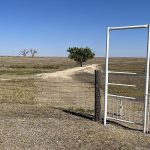Small business people in rural areas and small towns often feel overlooked. Here’s a roundup of some recent rural-urban conflict news stories.
What’s the right way to divide transportation dollars between rural and urban?
Should you go by road miles or by people? Rural areas have more road miles, but urban areas have more people. All the roads are in sorry shape. So how do you decide? These are some of the questions raised in Georgia on a proposed transportation plan. Read the details in the Atlanta Business Chronicle.
Tennessee promised all 95 county seats a four lane connection to an interstate. Delivering on that promise is causing conflict with urban areas. The details are on Tennessean.com.
Why set-aside special funds for rural areas?
Because most incentives go to the metro areas by default
In North Carolina the legislature is examining incentives policies. It turns out, not surprisingly, that most incentives end up in metro areas. Read more. Found at EDPro.
What are the results of targeting rural areas?
Medium sized areas are left out, and try to get in on the rural set asides
Setting aside just 20% of the funds in one Utah program for rural areas has set off much controversy, with debate over who is small enough to compete for that 20%. (Because we all know where the other 80% is going.) Read about it in The Spectrum.
The other result of rural incentive attempts?
Big urban business leaders are threatened
Big business in Arizona has drummed for years for a particular tax break for business. Now a lawmaker has introduced a bill to allow it, but with one difference: it only applies outside of the two big metro areas. Urban business leaders are horrified.
The Douglas Dispatch reports, “And it could mean that companies with manufacturing operations in those areas might decide to pack up and move their operations to rural areas, especially if it could save millions of dollars.”
You know what else scares urban areas?
Their business people want to move to rural areas.
Then we’d have the jobs and the people! Not likely, but read the UK survey at SourceWire anyway.
How can we bridge the urban-rural divide?
One CEO says target the rural for inclusive growth
Rahul Munjal, CEO of Easy Bill in India offers a solution. “I think you can target the rural, you can target the masses and you can make business models out of it. We have done it in Easy Bill. The more services you see coming and targeting the masses, the better it will be and the growth will be inclusive.”IBN Live
Why do I write about rural areas?
Because like incentives, almost all the business and development coverage defaults to the urban areas. Share your opinion!
New to SmallBizSurvival.com? Take the Guided Tour. Like what you see? Subscribe.
- About the Author
- Latest by this Author
Becky started Small Biz Survival in 2006 to share rural business and community building stories and ideas with other small town business people. She and her husband have a small cattle ranch and are lifelong entrepreneurs. Becky is an international speaker on small business and rural topics.










